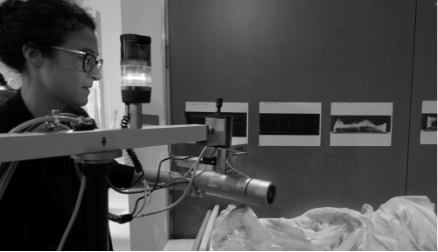Diagnostic services
The Centre's Scientific Laboratories are equipped with scientific instruments used for research and study purposes of artefacts undergoing restoration.
Listed below are the survey methodologies and techniques made available for third party activities:
- Photographic documentation in visible light diffused in high resolution.
- Photographic documentation in visible light grazing in high resolution.
- Infrared reflectography (950 nm and 1150 nm).
- False color infrared post-production (950 nm and 1150 nm)
- Fluorescence in the visible induced by ultraviolet radiation.
- Ultraviolet reflectography.
- Visible Light Induced Infrared (VIL) Luminescence.
- Reflectance transformation imaging (RTI)
- Flight time and triangulation 3D scans.
- Photogrammetry.
- Digital X-rays on large works (up to 4 m x 3 m).
- Computerized tomography on large works (up to 2.5 m in height and 2 m in base diameter).
- X-ray-induced fluorescence (XRF).
- Fiber optic reflectance spectrophotometry (FORS).
- Colorimetry.
- Preparation of glossy stratigraphic sections in epoxy resin or acrylic resin.
- Preparation and morphological analysis of the longitudinal section of yarns under the optical microscope.
- Spot test (for the recognition of the presence of protein substances and saponifiable substances, for the recognition of tanning with vegetable tannins).
- Observation in visible light with stereo microscope with digital camera (magnifications from 6.3x to 126x).
- Observation in reflected visible light, visible light transmitted with and without polarizers, fluorescence induced by ultraviolet radiation under the mineropetrographic microscope with digital camera (magnifications 40x, 100x, 200x, 500x, 1000x).
- Fourier transform infrared spectroscopy: acquisition of transmission and ATR spectra in the sample compartment and in reflection with optical fibres; acquisition of spectra in micro-reflection, micro-transmission (also with the aid of the diamond cell) and micro-ATR; The microscope is equipped with two detectors, one of which for analysis imaging.
- Scanning electron microscope observation (high vacuum or variable pressure) and elemental analysis (punctual and mapping) with EDX probe.
- Thermohygrometric monitoring (standalone datalogger, wifi probes).
Planned facilitations for recent graduates of the Master's Degree in Conservation and Restoration of Cultural Heritage and in Science and Technology for Cultural Heritage up to two years from the date of conferral of the title.


















